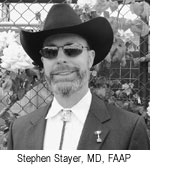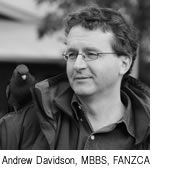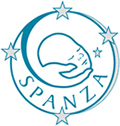- Welcome
- Meeting Information
- Objectives
Welcome and G'Day!
 We are greatly privileged to direct the first combined meeting of the Society for Pediatric Anesthesia (SPA) and the Society for Paediatric Anaesthesia in New Zealand and Australia (SPANZA) in beautiful San Diego. The meeting will be held at the Manchester Hyatt Hotel, which is less than two blocks from the San Diego Convention Center, the site where the American Society of Anesthesiologists meeting will be held in the days following our meeting.
We are greatly privileged to direct the first combined meeting of the Society for Pediatric Anesthesia (SPA) and the Society for Paediatric Anaesthesia in New Zealand and Australia (SPANZA) in beautiful San Diego. The meeting will be held at the Manchester Hyatt Hotel, which is less than two blocks from the San Diego Convention Center, the site where the American Society of Anesthesiologists meeting will be held in the days following our meeting.
 San Diego offers a wonderful climate year-round; a world-class zoo; the nation’s largest urban cultural park (Balboa Park); Legoland, a family amusement park;
San Diego offers a wonderful climate year-round; a world-class zoo; the nation’s largest urban cultural park (Balboa Park); Legoland, a family amusement park;
a wonderful beach and magnificent nightlife and restaurants.
Stephen Stayer, MD, FAAP
Society for Pediatric Anesthesia
Andrew Davidson, MBBS, FANZCA
Society for Paediatric Anaesthesia in New Zealand and Australia
Meeting Information
Purpose
The SPA and SPANZA Education Committees have put together an outstanding program this year focused on comparing practice and anesthetic outcomes in Australia, New Zealand and the US. The scientific program is based on feedback from attendees of the societies’ previous meetings and will focus on new medications, changes in sedation practice, new efforts to measure and compare outcomes, and conclude with a session on ways paediatric anaesthetists are involved in improving perioperative healthcare in developing nations.
Program Description
The first morning session will focus on new medications. Dr. Anne Lynn will discuss new medications used in pediatric anesthesia, and Dr. Brian Anderson will outline the important unanswered questions in pediatric pharmacology, and how we can answer these questions. Dr. Joseph Tobin will focus on the federal approval process for new drugs and help pediatric anesthesiologists decide about the risks of using medications off label. His talk will be followed by a panel discussing the differences in the approval and uptake of new drugs in the different countries. The second morning session will focus on establishment of a hospital wide sedation service, and what types of procedures and medications are safe for the non-anesthesiologist. These talks will be given by Drs. Ian McKenzie and Joseph Cravero.
The busy day will include a talk during the lunch hour by Andrew Davidson about the history of the discovery of Australia and New Zealand. Andrew, an avid map collector, will enlighten us with the fascinating and sometimes gruesome tales of the discovery and early charting of Australia and New Zealand.
The afternoon session begins with a series of speakers giving details about new multicenter quality measurement initiatives and safety outcomes from centers in Australia and the US. The speakers include Drs. Varugheses, Tyler, Nick Martin, Whitney, Von Ungern-Sternberg, van Der Greind and Lynn Martin. These speakers have been tasked to bring data from their institutions to provide an up-to-date comparison in practices. We will conclude the afternoon with Drs. Baines, McDougall and Politis discussing efforts to improve perioperative healthcare in developing nations. Our final speaker, Dr. Burdett Dunbar, is passionate about his subject and is an expert on wine. He will provide information on the health benefits or wine and his comparison of the wines of Napa and the Barossa Valleys.
Education Mission Statement
The Annual Meeting will focus on several areas of pediatric anesthesia and healthcare delivery. The overall goals for attendees of this program are to enhance their existing fund of knowledge and introduce them to new state-of-the-art issues that may affect their practice, thereby increasing their ability to provide the highest possible quality of care.
Target Audience
The program is intended for anesthesiologists and other practitioners who care for children in their practice of anesthesiology and/or critical care medicine. It is also intended for clinical and basic science researchers whose areas of investigation relate to pediatric anesthesia/critical care, as well as physicians and healthcare providers interested in learning more about the practice of pediatric anesthesia.
CME Credits
The Society for Pediatric Anesthesia is accredited by the Accreditation Council for Continuing Medical Education to provide continuing medical education for physicians.
The Society for Pediatric Anesthesia designates this educational activity for a maximum of 7.5 AMA PRA Category 1 Credit(s)™. Physicians should only claim credit commensurate with the extent of their participation in the activity.
We look forward to your active participation in the meeting sessions and request that you provide valuable feedback by completing evaluations and comments.
Objectives
1. Pharmacology — New Drugs and the Future
The New Drugs in Pediatric Anesthesia
Anne Lynn, MD
- Review recently approved anesthetic medications that have limited pediatric data
- Discuss anesthetics that are undergoing investigations and may be
approved for use in the future - Discuss newly approved non-anesthetic medications that affect children undergoing surgery
What Are the Important Questions in Pediatric Pharmacology and How Do We Get Answers
Brian Anderson, PhD, FANZCA
- Identify the desired target effect for pediatric medicines
- Understand the concentration-response relationship
- Use pharmacokinetics and adverse effect data to deliver the effective dose
The Approval process: Can I, or should I, use a drug off label? NZ and US Perspectives
Joseph R. Tobin, MD, FAAP, FCCM
- Discuss the FDA approval process for medications
- Describe the process for approval for medication use in pediatric or
neonatal populations - Determine the risk to the patient or practitioner when using a drug off label
2. Sedation
Your Hospital requests a Sedation Service: Setting up an anaesthesia lead sedation service
Ian McKenzie, MBBS, FANZCA
- Describe the process of developing a sedation service using parental input
- Where should safe sedation be practiced, which children need sedation
- What types of medications should be administered
- Who should administer sedation, and what qualifications are required
- What changed after establishing a sedation service
Should anesthesiologists be providing sedation?
Joseph P. Cravero, MD, FAAP
- Discuss the risks and outcomes from the administration of sedation in children
- Present data comparing outcomes of anesthesiologist versus
non-anesthesia providers - Discuss the safety of propofol use by non-anesthesia providers
History/Cartography of Australia and New Zealand
Andrew Davidson, MBBS, FANZCA
- Discuss the controversies surrounding the discovery and mapping of Australia and New Zealand
- Review what is meant by a discovery
3. Safety and Outcomes
How to Measure/Benchmark Safety and Outcomes
Anna Varughese, MD, MPH
- Review a process for measuring safety and outcomes in pediatric
anesthesia - Describe with examples how measurement is vital to improving outcomes]
- Describe how to implement benchmarking to improve outcomes
Wake Up Safe
Donald C. Tyler, MD, MBA
- Describe the Wake Up Safe Project
- Present preliminary data obtained
- Discuss how data may effectively improve practice
When Do We Call for Help: Audits of Stat Calls
Nick Martin, MB, BCh, FANZCA/Gina Whitney, MD
Britta Von Ungern-Sternberg, MB, BCh, PhD
- Present comparative data from three different institutions in two countries about the frequency and outcome from stat calls during surgery and in recovery
Pediatric Anesthesia Mortality: Audits in Australia and USA
Ben van Der Griend, MBBS, FANZCA
Lynn D. Martin, MD, FAAP, FCCM
- Present and compare anesthetic mortality data from the USA and Australia
- Discuss the strength of this data
- Determine how data may influence practice
4. Wine and Travel
Paediatric Anaesthesia: Opportunities to assist globally
David Baines, MBBS, FANZCA
- Describe a cardiac surgery program in developing countries
- Discuss the impact of this program on health care in developing countries
Trauma in developing nations
Rob McDougall, MBBS, FANZCA
- Describe trauma systems & the impact of trauma on health outcomes in developing countries
- Discuss what anesthetists and others in developed nations can do to help
SPACIES guidelines — safety improvements
George D. Politis, MD, MPH
- Present outcome data from surgically based medical missions
- Discuss current guidelines designed to improve health care for surgical mission
Health Benefits of Wine
Burdett S. Dunbar, MD, FAAP
- Describe the health benefits of wine and how this may affect longevity in various global populations
- Present differences in wine production/quality between the Barossa and Napa Valleys



